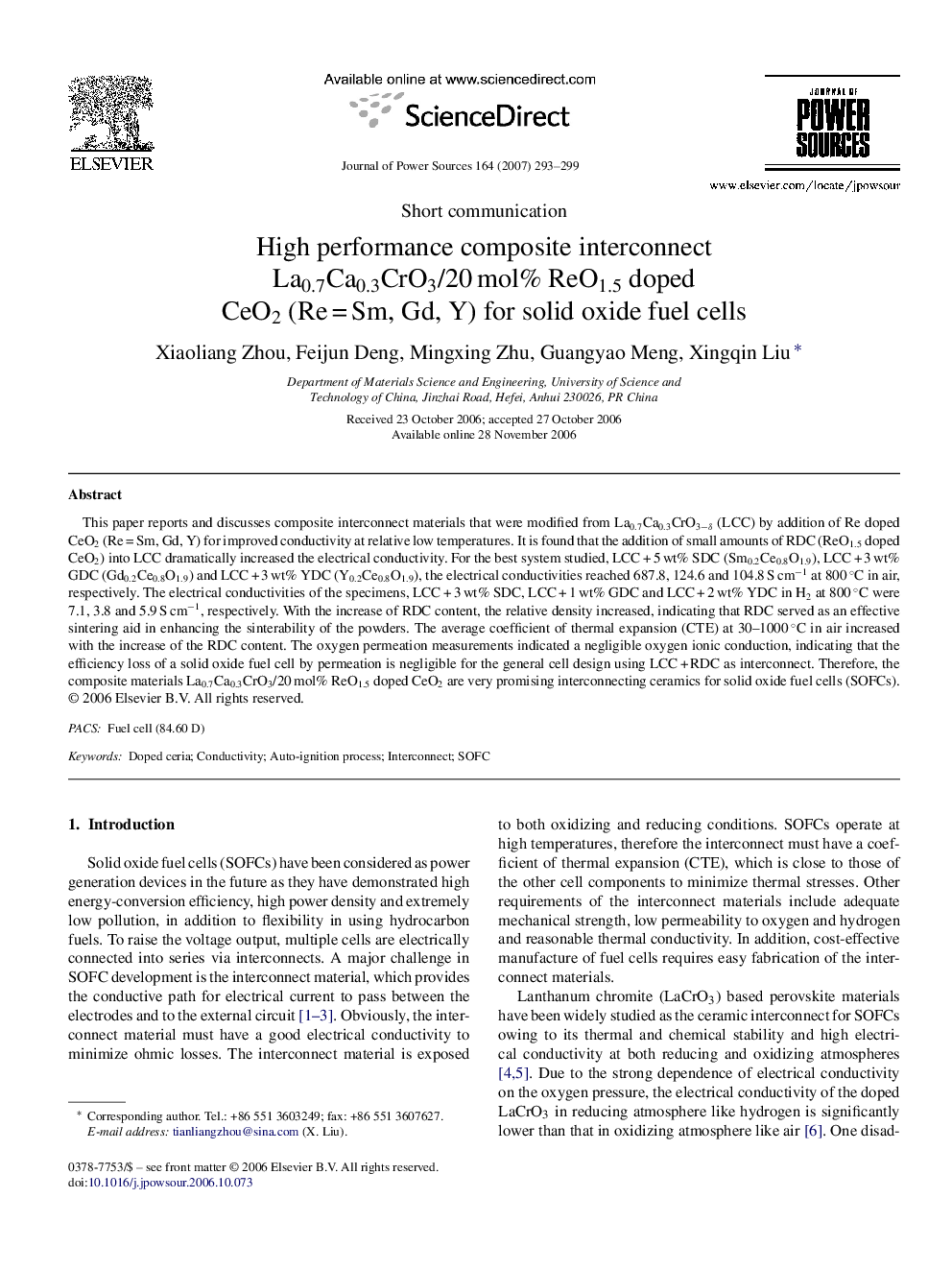| Article ID | Journal | Published Year | Pages | File Type |
|---|---|---|---|---|
| 1291722 | Journal of Power Sources | 2007 | 7 Pages |
This paper reports and discusses composite interconnect materials that were modified from La0.7Ca0.3CrO3−δ (LCC) by addition of Re doped CeO2 (Re = Sm, Gd, Y) for improved conductivity at relative low temperatures. It is found that the addition of small amounts of RDC (ReO1.5 doped CeO2) into LCC dramatically increased the electrical conductivity. For the best system studied, LCC + 5 wt% SDC (Sm0.2Ce0.8O1.9), LCC + 3 wt% GDC (Gd0.2Ce0.8O1.9) and LCC + 3 wt% YDC (Y0.2Ce0.8O1.9), the electrical conductivities reached 687.8, 124.6 and 104.8 S cm−1 at 800 °C in air, respectively. The electrical conductivities of the specimens, LCC + 3 wt% SDC, LCC + 1 wt% GDC and LCC + 2 wt% YDC in H2 at 800 °C were 7.1, 3.8 and 5.9 S cm−1, respectively. With the increase of RDC content, the relative density increased, indicating that RDC served as an effective sintering aid in enhancing the sinterability of the powders. The average coefficient of thermal expansion (CTE) at 30–1000 °C in air increased with the increase of the RDC content. The oxygen permeation measurements indicated a negligible oxygen ionic conduction, indicating that the efficiency loss of a solid oxide fuel cell by permeation is negligible for the general cell design using LCC + RDC as interconnect. Therefore, the composite materials La0.7Ca0.3CrO3/20 mol% ReO1.5 doped CeO2 are very promising interconnecting ceramics for solid oxide fuel cells (SOFCs).
